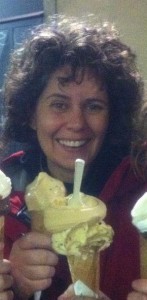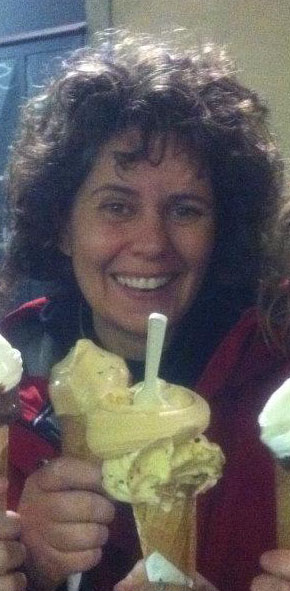 Does science communication have a place in the university? I briefly interrupted my search for the best gelato in Florence to contemplate this question during a session at the 2012 Public Communication of Science and Technology Conference. While Bruce Lewenstein from Cornell University, Suzanne de Cheveigne from CNRS in France, and Brian Trench from Dublin City University didn’t reach agreement on this topic, the lively discussion prompted me to consider my own position as a science communication researcher, practitioner, and teacher at UFV.
Does science communication have a place in the university? I briefly interrupted my search for the best gelato in Florence to contemplate this question during a session at the 2012 Public Communication of Science and Technology Conference. While Bruce Lewenstein from Cornell University, Suzanne de Cheveigne from CNRS in France, and Brian Trench from Dublin City University didn’t reach agreement on this topic, the lively discussion prompted me to consider my own position as a science communication researcher, practitioner, and teacher at UFV.
When I consider the environmental problems facing us in the Fraser Valley – including declining salmon populations, water availability, and a proposed expansion of a pipeline pumping tar sands oil through our region – I realize that science communicators are in positions to influence how people respond to health concerns, our environment, technology uptake and careers in science.
Brian Trench argued that the public communication of science and technology belongs at the university because it is already part of undergraduate and postgraduate programs, including Dublin City University’s Masters of Science Communication Program. Trench speculated on whether science communication will survive as a distinct field; its interdisciplinary nature makes it unique but also vulnerable without a key discipline to support it.
I found myself nodding in response to Suzanne de Cheveigne’s comments that knowledge only comes with specialization. Science communication researchers use tools from a wide variety of disciplines: communication studies, sociology, history, psychology, and philosophy. It is important for researchers to know and use these tools well, gaining expertise that only comes from in-depth study into each area.
Bruce Lewenstein argued that science communication doesn’t necessarily belong at the university but in institutions that work between the intersection of science and the public, such as San Francisco’s Exploratorium. Science communication has traditionally been an importer of ideas from other disciplines rather than an exporter, but its focus on the boundary between theory and practice in engaging publics makes it unique.
I saw evidence of this combining of theory and practice everywhere at the conference, with researchers, journalists, policymakers, and practitioners for science museums contemplating new science communication work from a range of perspectives including values, aesthetics, notions of the sublime, ethics of science communication, and the constitution of publics. So, while establishing academic credibility may be important (I met a new crop of researchers with PhDs in Science Communication), for me science communication’s real value remains in its goal to make science accessible to everyone.
This emphasis on accessibility means considering science communication’s place not just at the university but in all levels of government, in the press, within secondary education and informal education institutions, and so on.
Filled with new enthusiasm and insights into the role of science communication in society, I can return to my other quest for superlative gelat0. Already I can report that if you are ever in Florence, you owe it to yourself to visit Grom, but I’ll keep you posted about any other great locations my search uncovers.


What a great opportunity for both a gelato and some intellectual stimulation.
It is an interesting argument about whether Science Communication should be its own discipline. I cannot really see that is should. The communication discipline as a whole has drawn on many other disciplines from the starting gate (psychology, anthropology, sociology, etc), but what makes it a discipline is that in concentrates on “understanding of messages” across many contexts (health, culture, business, etc). I can certainly see the argument for a concentration in science communication to show up on a degree/diploma but I don”t think it needs a whole discipline.